It was a good four years ago when the idea of a DS Live Box set was first discussed, and the idea of assembling a project of this depth was daunting, to say the least. The history of the band, of course, extends beyond my first involvement in 1984, so I was thrilled to have been asked to oversee it as the executive producer. Indeed, until six months ago, I hadn’t even met every member of the historical lineup. This was finally rectified when I was found myself chatting with Pick Withers at a Rock And Roll Hall Of Fame event at Abbey Road Studios in London. Pick reminded me of just how hard the band worked back then in its inaugural lineup. It was a long while before the constant gigging, traveling, and recording reaped any financial reward. It’s easy to imagine a band coming along, having a huge hit on the airwaves as DS did with “Sultans Of Swing,” and achieving instant fame, recognition, and wealth. The reality is, of course, FAR from this, and the nature of how the industry worked then and, to some extent, does so today means that it’s a while before the hard graft pays off, if at all, as any major band that has achieved longevity will testify. Mark, John, Pick, and David worked themselves into the ground to lay the foundations for what was to come, and as the band grew, Mark’s singular driven ardor for his songs meant that work ethos never waned… as I found out when I joined the lineup for the Brothers In Arms album and subsequent gruelling tour.
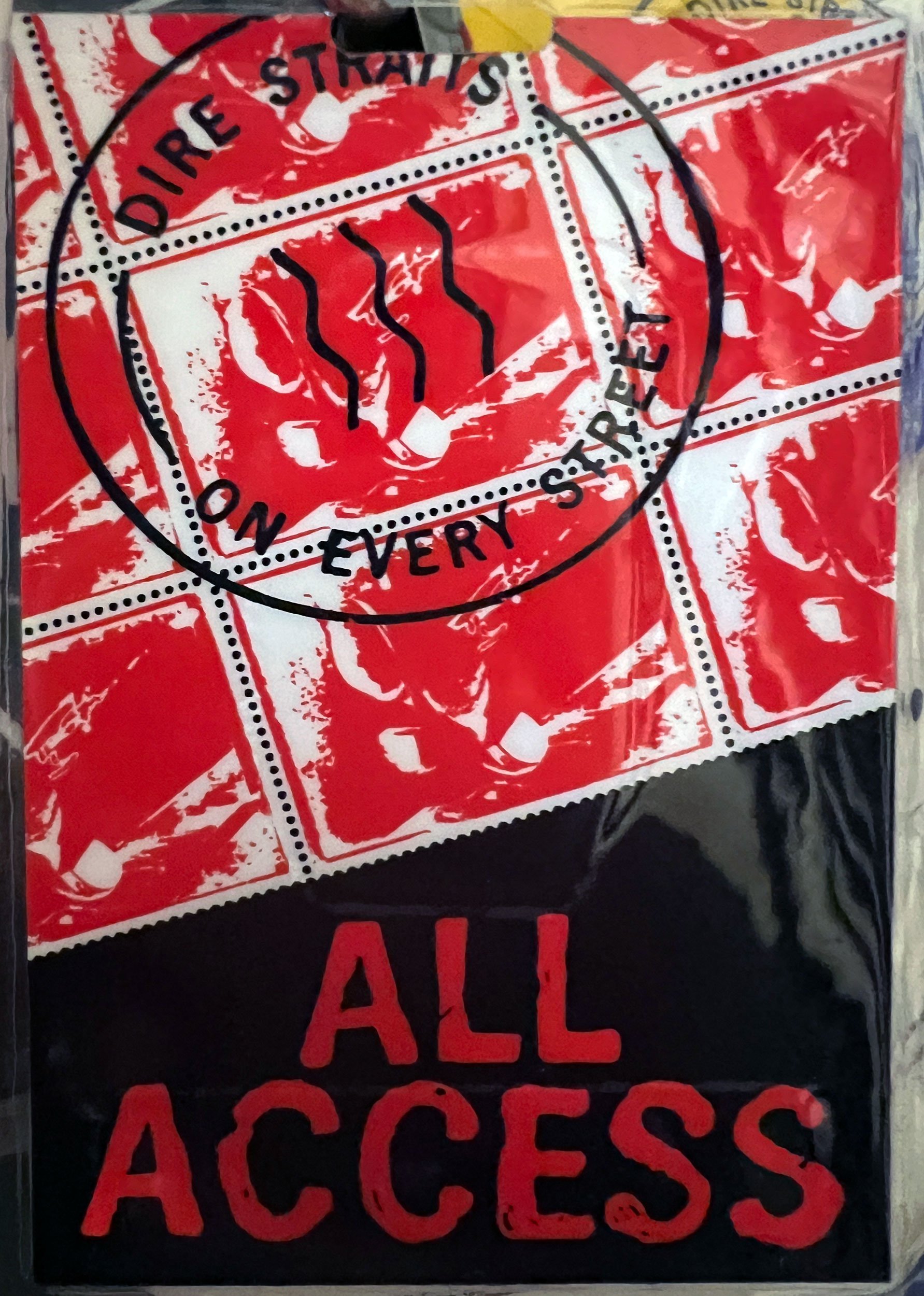
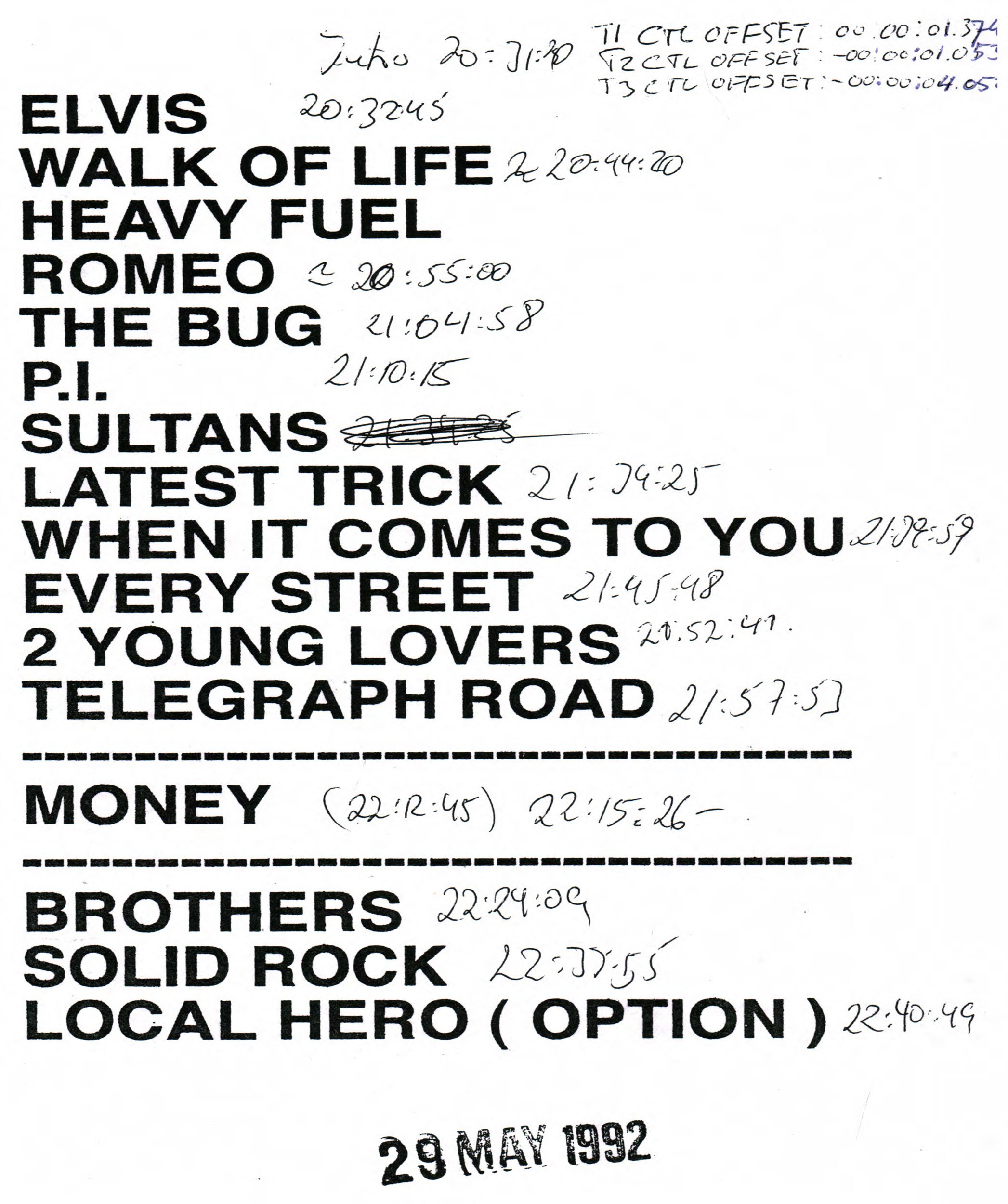
The magnitude of the task at hand became apparent as the great unearthing began. Master tapes are not always stored in the most obvious places, and a huge concerted effort has been ongoing in recent years to consolidate these valuable resources. The success of this archiving effort meant that I was able to access the many multitracks I needed to reference quickly and efficiently, and pretty soon, the album started to take shape. Obviously, the earlier recordings were simpler, as the standard 2″ 24-track analog method was used, and with the tapes all being in superb condition, once they were baked and digitised (see below), I was able to start work. As the band progressed, newer technologies appeared, and Mark has always had an inquisitive and open approach to them. Indeed, for the album ‘Brothers in Arms,’ we were one of the first bands to use the sparkling new DASH digital system on the Sony 3324, 24-track machine, with 24 tracks on half-inch tape. By the time it came to the tour, Sony had developed and released the 3348, a 48-track version, and naturally, we used FOUR of these machines in the mobile truck in 1992, recording 96 tracks, with two pairs sync’d together using SMPTE timecode and the other two ready to roll as tape ran out. The resulting number of tapes and tracks was a real handful to go through. Luckily, I had help from the archive team at Universal and British Grove engineer Luie Stylianou, who was happy to do most of the assembly and syncing. When tapes are digitised, they are simply numbered, and individual tracks are not identified, resulting in many hours of work to even understand what you are hearing. Slowly, the mixes started to come together.
Obviously, the ultimate goal was to ensure the newly mixed tracks sounded like they were from the same place and time as the originals, so the reverbs, outboard effects, and ambience mic levels (often there were four pairs of audience mics) were critical. This can only be achieved by meticulous referencing of the originals. With very little in the way of recall notes, there was a lot of trial and error, although research and memory served well. Thankfully, modern audio plug-in tech is so accurate that a lot of the original plates and delays can be faithfully recreated, such as the unique AMS delays and even the Ursa Major Space Station multi-tap delay of which the band was so fond back in the day.
There were also instances where some mics weren’t even recorded, as in the case of ‘Sultans Of Swing’ 1992, where one of the drum overheads was mysteriously absent on every night. Obviously, an unnoticed error in the digital patching as the routing was clearly linked to our monitor system, which switched programs (and subsequent channel routing) for each song. In the case of ‘Fade To Black,’ the entire drum kit was muted; this must have been noticed on the night by the engineer, as they came back halfway through the song. I could imagine the frantic radio calls from the mobile truck to the stage crew to “unmute the bloody drums!” Sadly, this was the only night we played that song, so I needed to rebuild the drums from a few samples. Luckily, it wasn’t a complicated part, just a hi-hat and cross-stick. This is something that we would have done back in ’92 (using the Synclavier system), but the technology today makes it a whole lot easier.
Right – One of the many 14″ reels of tape from ‘On The Night.’ A maximum of 44 minutes of 24-bit 48-channel recording can be achieved on a standard reel of 1/2-inch tape at 44.1kHz. The original sample rate of 44.1k was retained for these mixes.
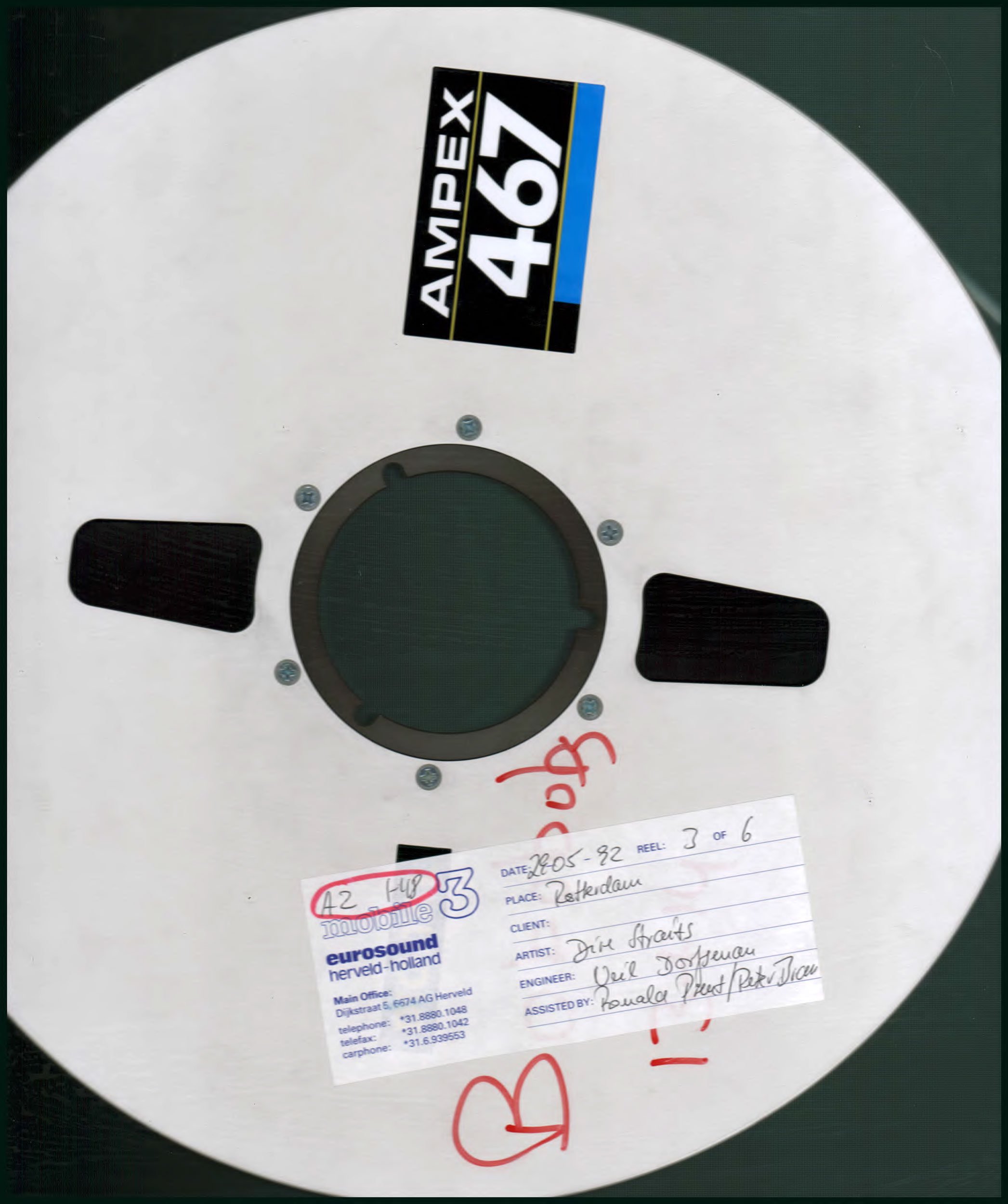

An original track sheet from the 1992 ‘On The Night’ recordings. The tracks in red were either overdubs or tracks moved from the slave reel, don’t forget we recorded 96 tracks but consolidated it down to 48 for mixing. As you can discern, our fascination for Bass Drums was still there into the early ’90’s!
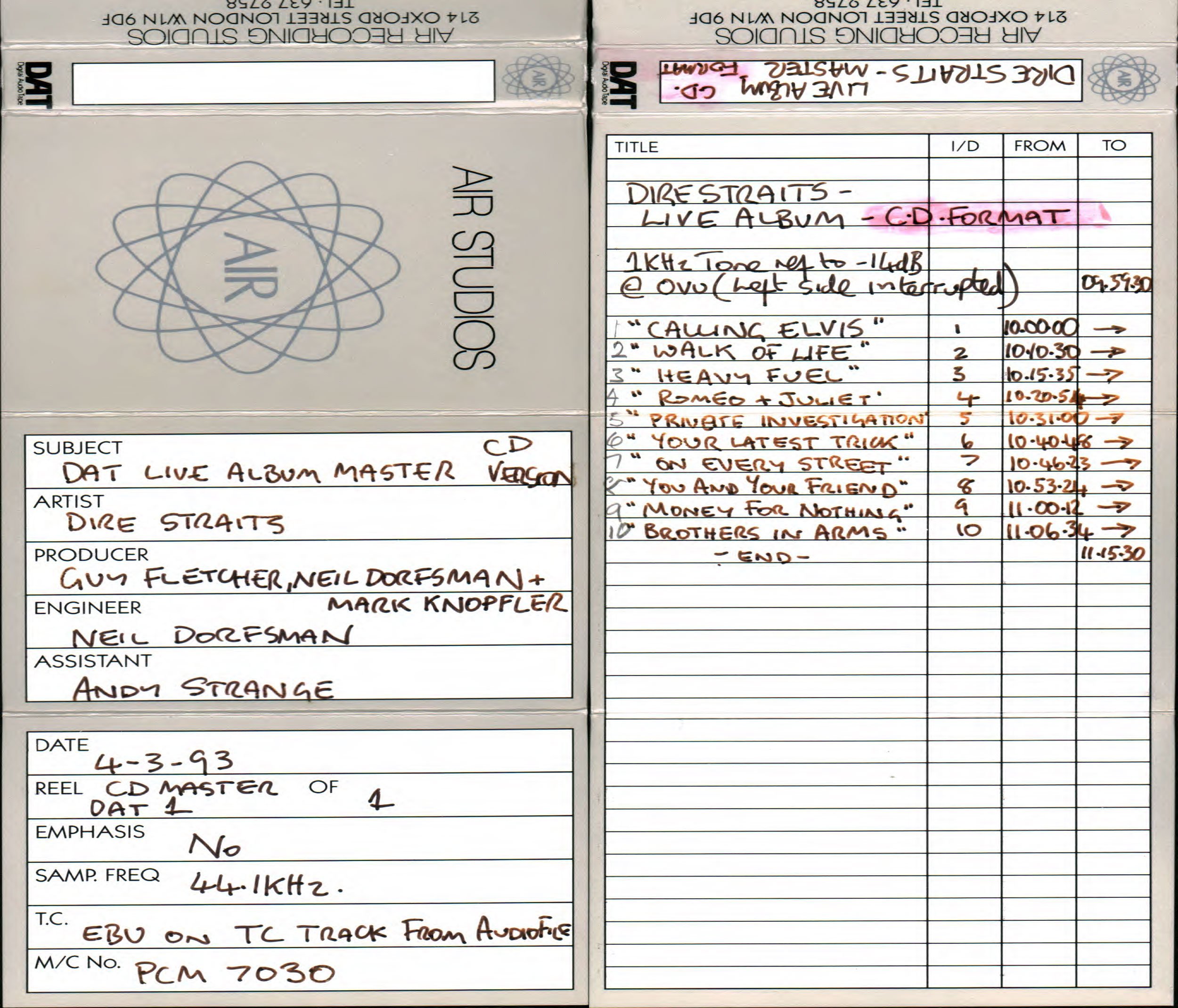
The Live At The BBC recordings remained untouched by me but were freshly remastered by Andy Walter. However, when it comes to the version of ‘Tunnel of Love’ as originally presented so mysteriously in mono, Andy and I elected to introduce (using software) at least a subtle widening effect during the mastering process. This adjustment was made to soften the transition. We surmised that this particular recording might have originated from a camera feed, which was typically in mono during that era. Maybe the multitrack tape ran out, the engineer disappeared thinking the show was over…the full story behind it may remain a mystery. The Encores recordings are untouched and the Bob Ludwig 2021 remasters (from the Black Friday reissue) were used.
The discovery of the Rainbow show was a delightful surprise; I had no prior knowledge of its existence. Upon receiving the files, I eagerly immersed myself in the entire performance. When I heard the unmistakable voice of Phil Lynott in the encores, it nearly knocked me off my chair. Clearly, it was a remarkable evening, marking the conclusion of an exhausting tour, and you can hear the tight bond within the band. Technically, the Rainbow show was as well recorded as everything in this collection (apart from TOL on Encores) and mixing it was a joy, especially since I didn’t need to match any ‘original mixes.’
Left – The original DAT master tape for the On The Night album.
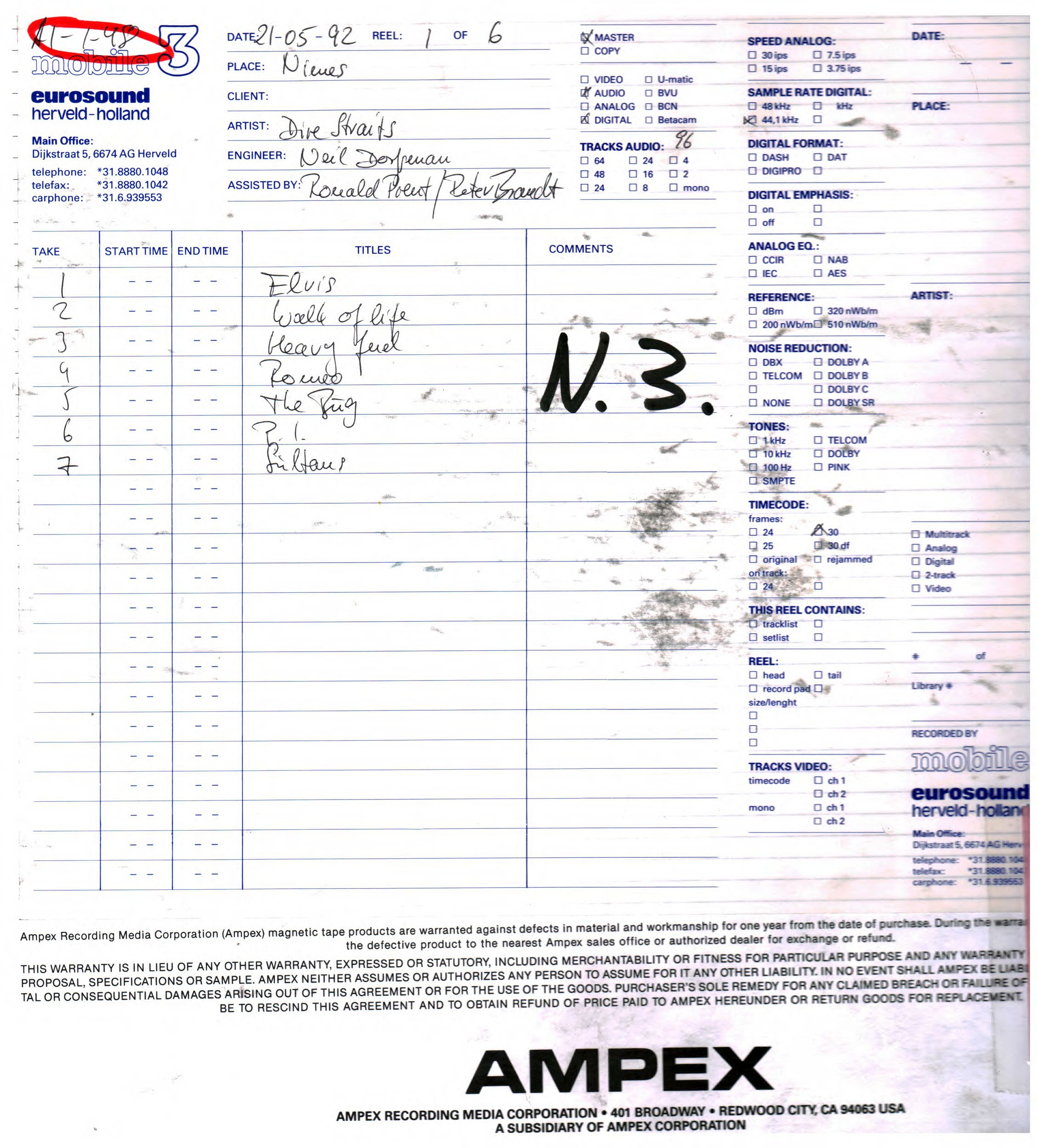
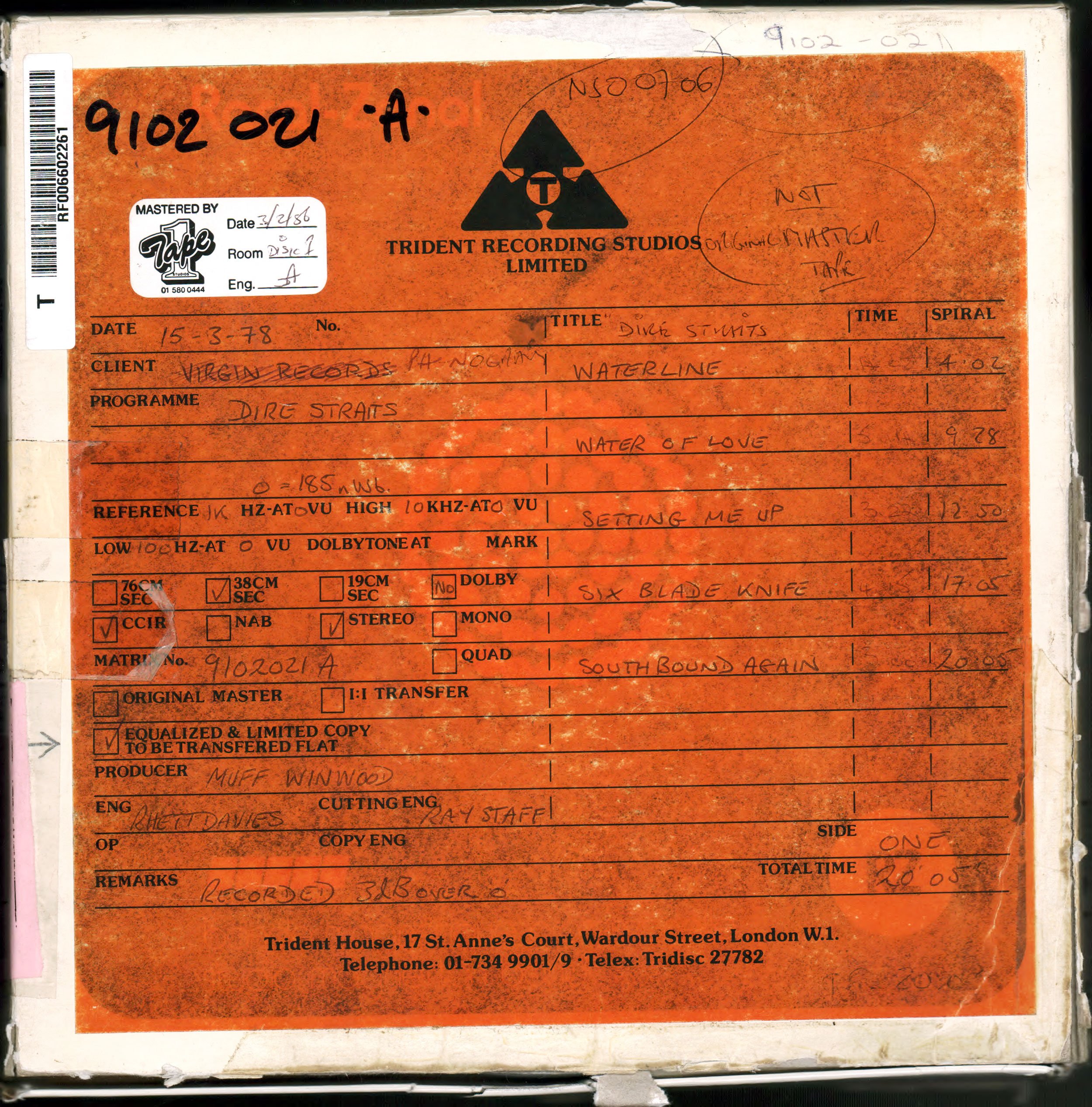
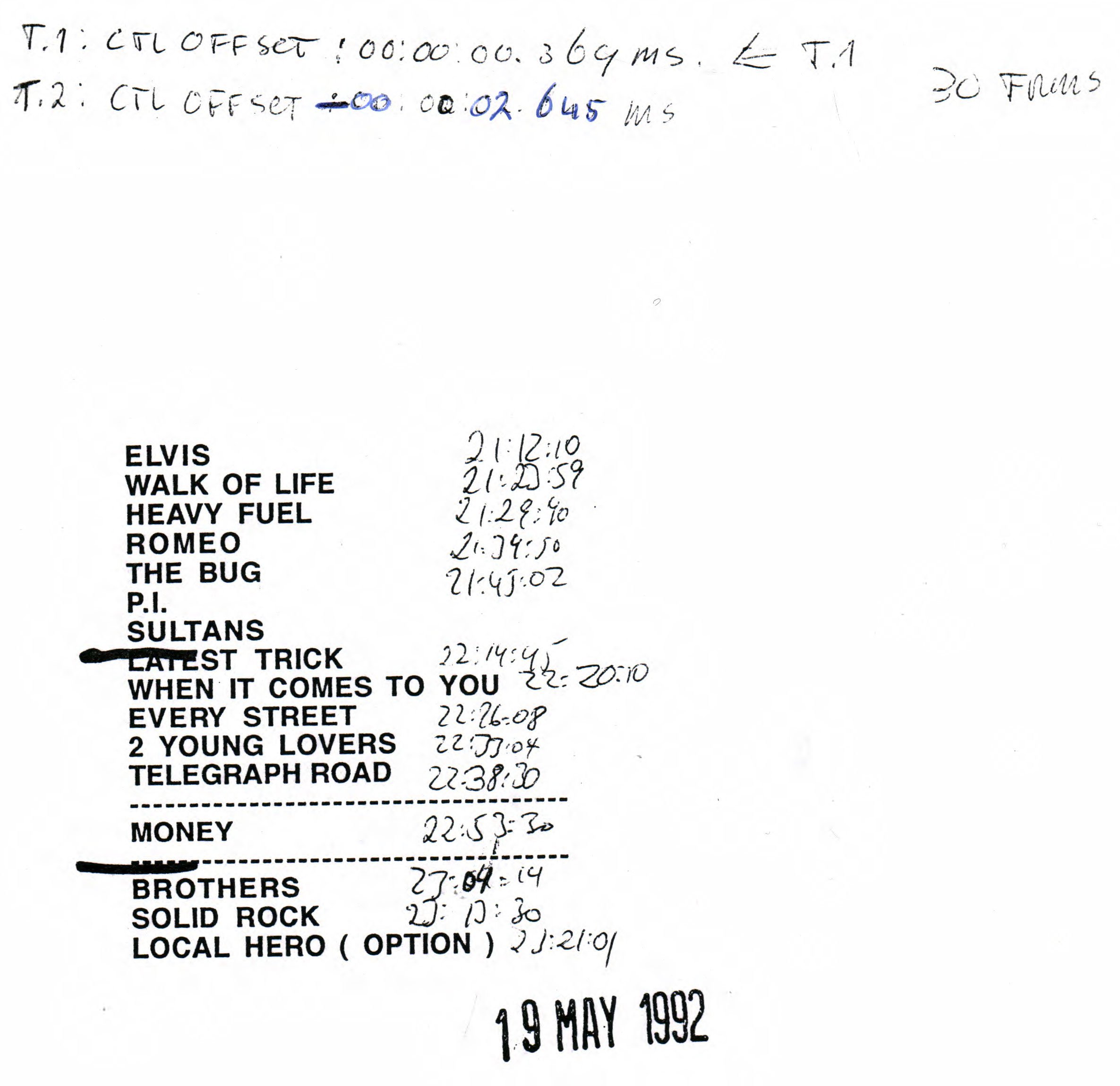
Two box labels and a set list with timings scrawled on it.
This collection of recordings serves as an embodiment of every era of the band and pays tribute to all the musicians who poured their hearts and souls into these performances. It’s especially dedicated to the memory of Jack Sonni, who joined us during the ‘Brothers In Arms’ tour and, incidentally, played a significant role in introducing me to my wife, Laurie, many years ago.”
Baked and digitised – an archival technique used to preserve tapes. As tapes age, the oxide that holds the magnetic information can literally detach from the tape backing when played on a tape machine. Gentle baking, typically done in an oven for approximately 24 hours, ensures the tape remains playable with significantly reduced risk of catastrophic self-destruction. After baking, they are played back on a properly aligned tape machine and converted to digital format, typically at a resolution of 192k/24-bit.
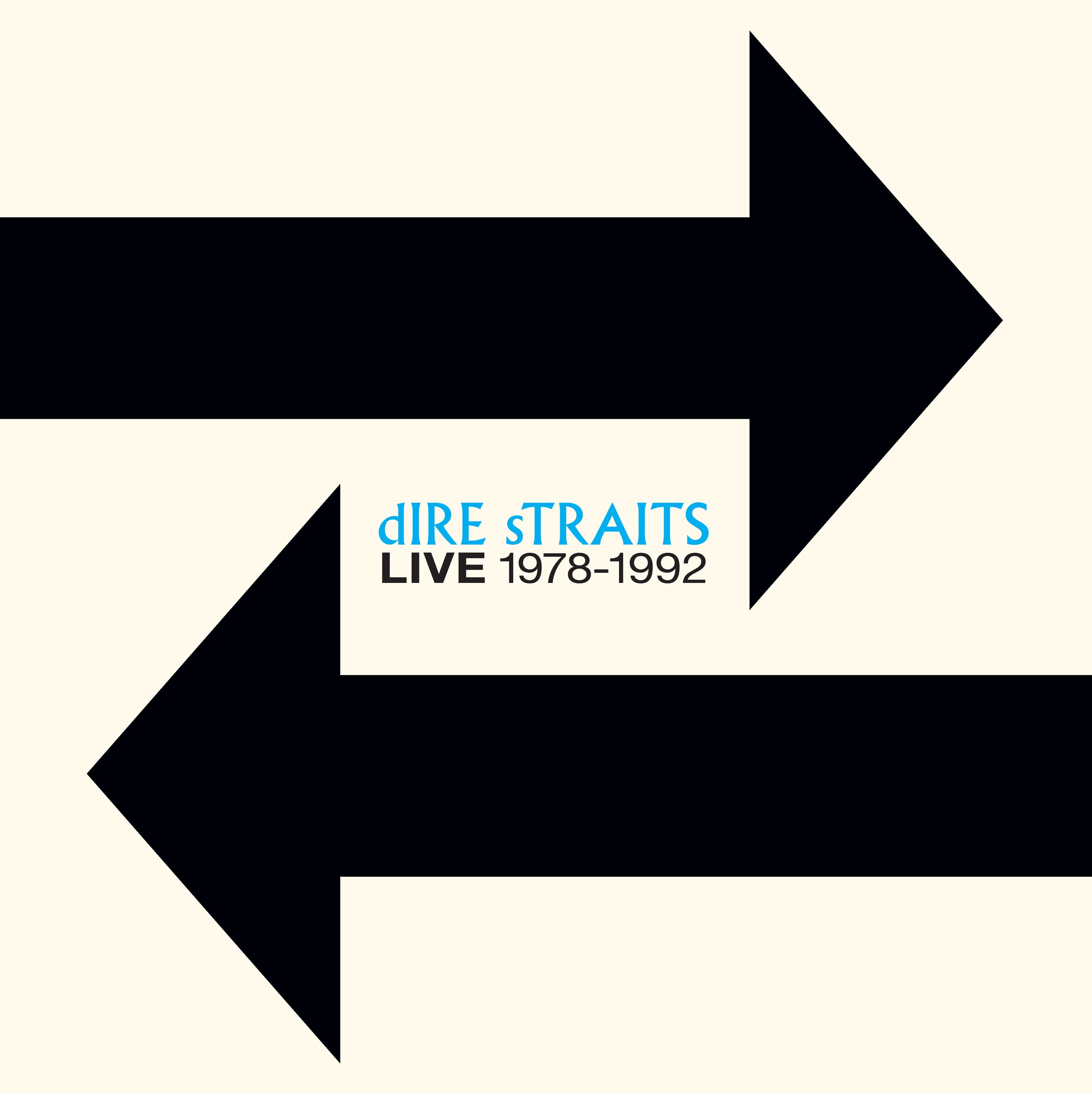
Click here to order, listen or stream https://direstraits.lnk.to/live78-92
